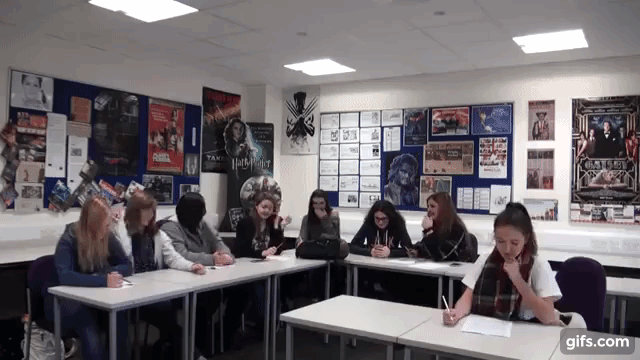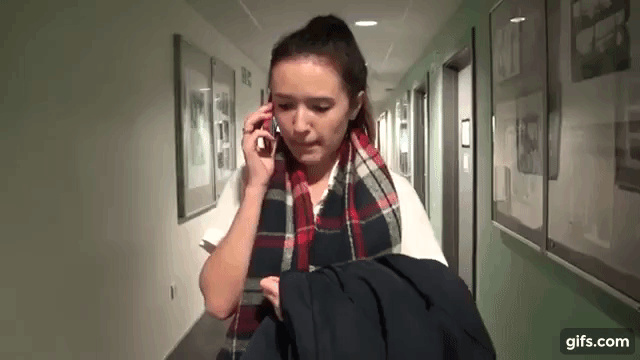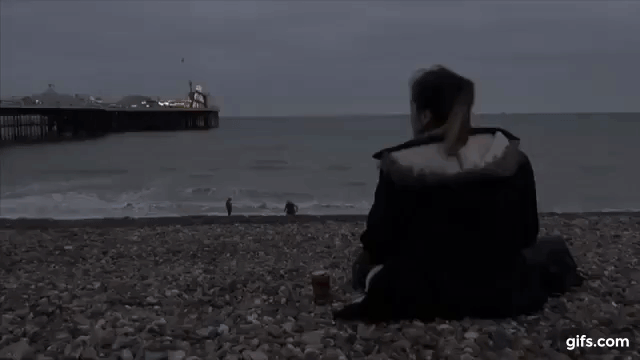In what way does your media product use, develop or
challenge forms and conventions of real media products?
Short Films- Forms and
Conventions:
Characters-
Normally have 2-3 characters in a short film as this allows the viewer to
relate to them in a short amount of time.
Twist- Plot
twists are very common as it makes the film more interesting.
Duration- Short films
are between 5-10 minutes long.
Situation- The
circumstance that occurs is relatable to the audience but it is then flipped or
exaggerated to intrigue them.
Narrative
·
Restricted
narration- Subjective- Point of view- Personal perspective
·
Unrestricted
narration- Objective- Overview (e.g. long shot)
·
Omniscience-
All knowing and seeing- Creates dramatic irony
·
Narration-
voiceover and audio- personal perspective
Todorov’s theory of Classic Narrative
·
Linear-
Chronological with/without closure- classic and organised
·
Not
applicable to Non-linear narratives (e.g. flashbacks- non-chronological)
Todorov’s Model
1. Equilibrium- All is well
2. Disruption- Disturbs
3. Confrontation- Recognition and attempts to deal
with issue
4. Resolution- Resolved
5. New equilibrium- new normal/aftermath
Roland Barthes theory of Action and Enigma Codes
·
Enigma
codes- A mystery in a text- Questions raised- The spectator is motivated to
find the answer by close and active engagement with the narrative
·
Action
codes- Tells us that an action will take place- Enables us to engage actively
by predicting the plot (e.g. flickering light; spectator predicts a ghost)
Vladimir Propp’s theory of Morphology of the Folk Tale (1928)
Character types:
·
Hero-
Seeks something
·
Villain-
Blocks hero’s quest
·
Donor-
Provides magic object
·
Dispatcher-
Gives hero message/new information
·
False
Hero- Pretends to be hero
·
Helper-
Supports hero
·
Princess-
The reward/Object of Villains scheme/Any gender
·
Princesses
Mother or Father- Rewards hero
These types help us predict and
understand characters actions and help predict narrative development.
Claude Levi-Strauss’s theory of Binary Oppositions
·
Good vs
Evil
·
Protagonist
vs Antagonist
·
Action vs
Inaction
·
Active vs
Passive
·
Stereotypical
vs Original
Chris Vogler’s theory of The Hero’s Journey (1992)
Linear narratives are a useful
way of assessing the success or failure of a protagonist in terms of their
narrative goals.
·
Call to
adventure
·
Crossing
the threshold
·
Reward
·
The road
back
·
Return
with the elixir
Genre
Character Stereotypes- Archetypes
Rick Altman
Semantic/visual codes-
communicate meaning- iconography
Syntactic codes- Narrative
structure and theme (e.g. typical; themes, binary oppositions, characters, disruptions
etc)
Steve Neale
Repetition and Variation- genres
are copied but also developed and challenged
i) Short films that you
have watched
Consider what the typical
features are of short films. This does not have to be original work, use
your short film analysis from September and even last term to help you in this
process.
Short films that I have watched:
(Links below)
What are the typical features of short films?
Genre conventions-
Character Stereotypes- Archetypes
No Offense- This short film uses
prime examples of character stereotyping throughout the film. This is due to
the fact that the films genre is categorized in the area of comedy and has used
the style of parody within it to create a comedic outcome due to over
exaggerating certain conventions.
This is an example of a
character stereotype used in this short film as the two male characters are
both playing the part of ‘neighbours’ with one another. When analysing the social norms and values
that a ‘neighbour’ should abide by when interacting with one another, it is to
be polite and make small talk. These are common social norms placed within our
society in which these two characters are recreating at the beginning of this
sequence.
This last scene shown at the end of the short film focuses on the
stereotypes associated with black culture. The character of Dale is positioned
as an archetype due to the fact that the action that he portrays in this scene;
‘dropping the mic’ is stereotypically a reference to a concept used in black
culture.
Rick Altman
The action that’s taken place is an example of a semantic code due to
the fact that it’s meaning is to communicate humour for effect.
Steve Neale
This film No Offense is an example of how genres are copied but also
developed and challenged. By using the phrase “No offense” they exaggerate the
phrases intentional meaning and therefore develop and challenge it.
David Buckingham
As a result of this film being a hybrid it allows for there to be
variation and individualism within the genre as they are challenging
stereotypical genre conventions. Therefore allowing the genre to change and
express new aspect’s within it.
Using the genre of Social Realism
Too Quick to Judge – This short film uses
many examples of the genre ‘social realism’ through the themes used and the way
the characters portray and deal with them.
In this short film we are presented
with two main characters that have different stories and backgrounds. The genre
of social realism is used through the issue presented; the fact that the female
character is deaf is in itself a real life issue that many people have to live
with. So the fact that this film covers the concept of what it’s like to have a
disability helps justify its position as a social realism film as this is a
topic that is both relatable and realistic.
David Buckingham
This short film is good in the
perspective of reinforcing Buckingham’s point about how “genres are moulded by
society” as the actions that take place are a realistic interpretation of how people
in our society might react with these issues presented in the film. This
therefore “moulds” the genre to fit in a social realism category.
Narrative conventions
The Manipulated Living- This short film is a
good example of how narrative conventions are used in short films as it uses
both Todorov’s and Barthes theories of narrative.
Todorov’s Model
This short film is a good example of Todorov’s
model referring to narrative structure. For example the film begins with the
young boy sleeping peacefully in his bed, this refers to the Equilibrium as all
is well.
Then the boy is woken up by loud noises coming from another part of the house. This startles the boy as you can see in his facial expression.
Not long after viewers can see footsteps outside of the door; blocking the light coming through(action code).
When suddenly a drunk, angry male figure strides into the room grabbing the boy in an attempt to rape him. This refers to the Disruption part of the model as the Equilibrium had been demolished.
After a series of jump cuts that fade in and out, a young man storms in with a bat hitting the drunken mad over the head in order to prevent him from hurting and molesting the young innocent boy. This part refers to the Confrontation as there has been recognition of the Disruption and the young male is attempting to deal with this issue.
Shortly after the young man then threatens the antagonist to prevent him from ever hurting and abusing the little boy ever again.
He also promises the boy that the man will never hurt him again, this refers to the Resolution as the issue has been resolved.
As the young male leaves he tells the young boy that he “can wake up now”, which is followed by a medium close up of an older man (most likely an older version of the little boy) waking up in bed as if he has just had a nightmare (the scene we have watched).
Towards the end of the film the man goes into the room the find the ‘hero’ that saved him from the drunken man, standing in the room. His reaction to seeing the man is pleasantly surprised; suggesting that this is the New Equilibrium as normality has been restored after waking up from his nightmare this is due to the fact that everything is now at peace.
Then the boy is woken up by loud noises coming from another part of the house. This startles the boy as you can see in his facial expression.
Not long after viewers can see footsteps outside of the door; blocking the light coming through(action code).
When suddenly a drunk, angry male figure strides into the room grabbing the boy in an attempt to rape him. This refers to the Disruption part of the model as the Equilibrium had been demolished.
After a series of jump cuts that fade in and out, a young man storms in with a bat hitting the drunken mad over the head in order to prevent him from hurting and molesting the young innocent boy. This part refers to the Confrontation as there has been recognition of the Disruption and the young male is attempting to deal with this issue.
Shortly after the young man then threatens the antagonist to prevent him from ever hurting and abusing the little boy ever again.
He also promises the boy that the man will never hurt him again, this refers to the Resolution as the issue has been resolved.
As the young male leaves he tells the young boy that he “can wake up now”, which is followed by a medium close up of an older man (most likely an older version of the little boy) waking up in bed as if he has just had a nightmare (the scene we have watched).
Towards the end of the film the man goes into the room the find the ‘hero’ that saved him from the drunken man, standing in the room. His reaction to seeing the man is pleasantly surprised; suggesting that this is the New Equilibrium as normality has been restored after waking up from his nightmare this is due to the fact that everything is now at peace.
Todorov’s Model
1. Equilibrium- All
is well
2.
Disruption- Disturbs
3.
Confrontation- Recognition and attempts to deal
with issue
4.
Resolution- Resolved
5. New equilibrium-
new normal/aftermath
Roland Barthes theory of Action and Enigma Codes
·
Enigma codes- A mystery in a text- Questions
raised- The spectator is motivated to find the answer by close and active engagement
with the narrative
·
Action codes- Tells us that an action will take
place- Enables us to engage actively by predicting the plot (e.g. flickering
light; spectator predicts a ghost)
The short film uses Enigma Codes accurately
as the ending of the sequence when you find out that the scene with the drunken
man was a dream. This causes the audience to question the sequence and find out more
information about why and when it happened.
Barthes theory of Action Codes is
also used in this short film during the scene when we can see the drunken man’s
footsteps outside the door. This action
code tells the audience that someone is about to enter the room and therefore
creates panic and enigma amongst them. It also causes them to engage actively
as they know something is about to happen from seeing those shoes.
ii)
Your Own Short film
Apply the same process to your own Short
film.
Identify similarities and differences between your own and existing short
films
Refer to theory (eg narrative and genre
theory) throughout.
My own short film-
Similarities
and Differences
Genre conventions-
Character Stereotypes- Archetypes
In our short film we to have used character
stereotypes to some extent but we have also challenged and developed this type
of genre convention as well.
For example, the two main
characters Amy and Ashlee are stereotyped in various ways:
·
They have a very close bond and advise each other
with fashion and beauty advice, which is what stereotypical ‘girlie’ girls are
like.
·
They are also shown gossiping about their other
people their age which is also a common stereotype amongst teenage girls
·
Amy clearly doesn’t get along with her mum which
is evidenced in various parts of the film; stereotypically teenagers are known
for not getting along with their parents
·
They have the same dress code; girls are
stereotyped to dress the same
How we have developed and challenged these stereotypes:
At the beginning of the film a
lot of viewers may start to predict in their minds that the film is just going
to be about the life of two stereotypical teenage girls. We have positioned
viewers to think this way by using the stereotypes above as a diversion from
the real topic that’s shown later in the film. Later in the film we realise
that Amy has been imagining her sister this whole time as a way of coping
wither her death and a distraction from her torment of being bullied and
isolated. Through using this plot twist we have challenged these character
archetypes by deceiving the audience.
How we have used the genre of Social Realism in our
short film:
·
Through basing the storyline of our film on
realistic and relatable issues that a wide range of people suffer from on a
daily basis. Such as bullying, disassociation and loneliness.
·
We have put these issues into a real life
setting and environment which therefore makes the audience relate to the issues
easier as it’s in a situation that they are familiar with e.g. school or
home-life.
How we have used theory concepts:
Steve Neale
Repetition and Variation- genres are copied but also developed and
challenged
We have used a typical genre by
choosing ‘Social Realism’ however we have developed this by interbreeding it
with a hybrid of ‘Psychological-social realism’.
Roland Barthes theory of Action and Enigma Codes
·
Enigma codes- A mystery in a text- Questions
raised- The spectator is motivated to find the answer by close and active engagement
with the narrative
We have used Enigma Codes by not
giving away the plot twist as we played the theme out through presenting the
protagonist walking to the Graveyard. This therefore create enigma as the
audience with be wondering why she’s going there or who’s gravestone that it.
Narrative
Conventions:
Todorov’s Model
1. Equilibrium- All
is well
2.
Disruption- Disturbs
3.
Confrontation- Recognition and attempts to deal
with issue
4.
Resolution- Resolved
5. New equilibrium-
new normal/aftermath
Our film is an example of
Todorovs model as it starts with the two characters chatting in Amy’s room;
this is the Equilibrium as all is well.
The Disruption occurs when Amy faces
the class bullies as they pick on her, this is then followed by the
Confrontation as Amy attempts to deal with this by phoning Ashlee and escaping
from the situation.
This is then resolved when
the two girls are having fun in Brighton. After the Amy realises that she can’t
keep imaging that Ashlee is still alive this would then be the New Equilibrium
as it’s a ‘new normal’.
b) Ancillary Task One –
Film Poster.
i)
Film Posters that you have analysed.
Identify the main conventions of Film
Posters – both content and layout conventions.
No need to be original here – if you met
earlier deadlines in the research process, you can transfer this work into this
section.
Illustrate with Screengrabs / images.
Short film poster's are have analysed:
(Links below)
- Break My Bones (2016)
- The Lonely Road (2014)
- Grizzly Man (2005)
- Requiem For A Dream (2000)
Forms and Conventions of a short
film poster:
·
Billing
block; actors, director, producer, institutional information
·
Production
company logo
·
Film/media
critics; The Times, The Guardian
·
Film
festivals/source of promotion; Edinburgh Internatonal, Toronto
·
Title;
bold and clear, most often positioned horizontally
·
Protagonist
included in image; main focus of positioning, without giving away the plot
·
Lighting/Colour
scheme/Setting/Font; all helps connote film genre
ii)
Your own Film Poster
Apply the same process to your own Film
Poster.
Identify similarities and differences
between your own and existing short films
Refer to theory (eg narrative and genre
theory) throughout.
Forms and Conventions of my short film poster:
·
Billing
block; actors- Emily and Hannah Sharpe/Sharon Reynolds director, producer, institutional information- We designed our own billing block with our own production information in. This made the billing bock seem more realistic and credible for the formality of the poster.
·
Production
company logo- We made our own production logo to support the branding and professionalism of our production company. We decided to include a figure of a bear as its memorable and will therefore stay in peoples minds so they will remember our company.
·
Film/media
critics; Little White Lies and Timeout- We wanted to include LWL's as a critic of our film poster as it made sense since they were already reviewing our film. We also used Timeout as a critic as we wanted to include a well established publication.
·
Film
festivals/source of promotion; Sundance, Tribeca- We selected these two film festivals to support our film as they are both highly popular festivals and therefore are a great source of promotion and marketing for the film. With Sundance having more than 46,000 attendees in 2016 and Tribeca being a successful film festival since early 2002.
·
Title;
bold and clear, most often positioned horizontally- The style of the title is designed using the font; Shorelines Script. We wanted to use this as it resembled an individuals handwriting and thought that it could relate to the character as the film is based from her point of view. So by choosing this title we made show that it linked to the film as well. The format of the title is quite thin so we could have tried to make it slightly thicker. However, I made show that the title was positioned across the whole horizontal top section of the poster as this fits the standards and conventions of most short film posters.
·
Protagonist
included in image; main focus of positioning, without giving away the plot- We wanted to include both the characters within the ,main image of the poster as it helps to express their close bond that they have between one another.
·
Lighting/Colour
scheme/Setting/Font; all helps connote film genre- When editing this poster I wanted to make sure that the lighting was clear in promoting the type of mood and atmosphere we wanted to get across to the spectators. For instance, the sky is a warm relaxing colour with the blue see very distinct and calm in the background. The main visual setting on the beach connotes peacefulness and privacy as is very secluded. Whereas we wanted this to be contrasted with the bright, vibrant lights and attractions that you can see in the near distance.
c) Ancillary Task Two – LWL Review.
i) What
is LWL? Who reads it?
Little White Lies is
a publishing company that produces film magazines. It has been in use since March 2005. Their
target audience are males and females of a middle class background aged 25-35.
Identify the
conventions of both layout and Language in the film reviews of LWL and justify these-
The language in which
Little White Lies write in is formal, honest and informative. The critics are
very knowledgeable and confident in what they are talking about. Whether that
be about the graphics used, the themes and issues discussed or about other
similar film relations.
ii) Explain how you have followed the
conventions of LWL – both Layout and Language.
As shown and stated in this screen grab above we have imitated the exact same layout design of little white lies.
We have done this with the:
- Rating system
- Page number size
- 'Reviews' text
- Image
- Title
- Institutional information
- Main text
How we have followed LWL's Language conventions:
When writing our
review for LWL’s we decided to separate the review into three sections, so that
we would each write two paragraphs. This was followed by a draft but in our
when writing up our final sections we knew what each part needed to include:
·
Six paragraphs
·
Emily as an actress; her previous films
and what genres she has starred in before this one
·
Emily and Hannah’s relationship as they
are sisters in real life and how this supported their performance as sisters on
screen
·
The directors style; previous work, how
our style stands out and the genre of film
·
Plot summary
·
Representation of social groups;
similarities and differences- repetition and variation
·
New style for both the director and
actors for this style of genre
·
Current issues; raw, realistic and
modern
Content:
·
Must not be biased
·
Chatty and formal
·
Rating = 3 or 4
·
Around 500 words



































































